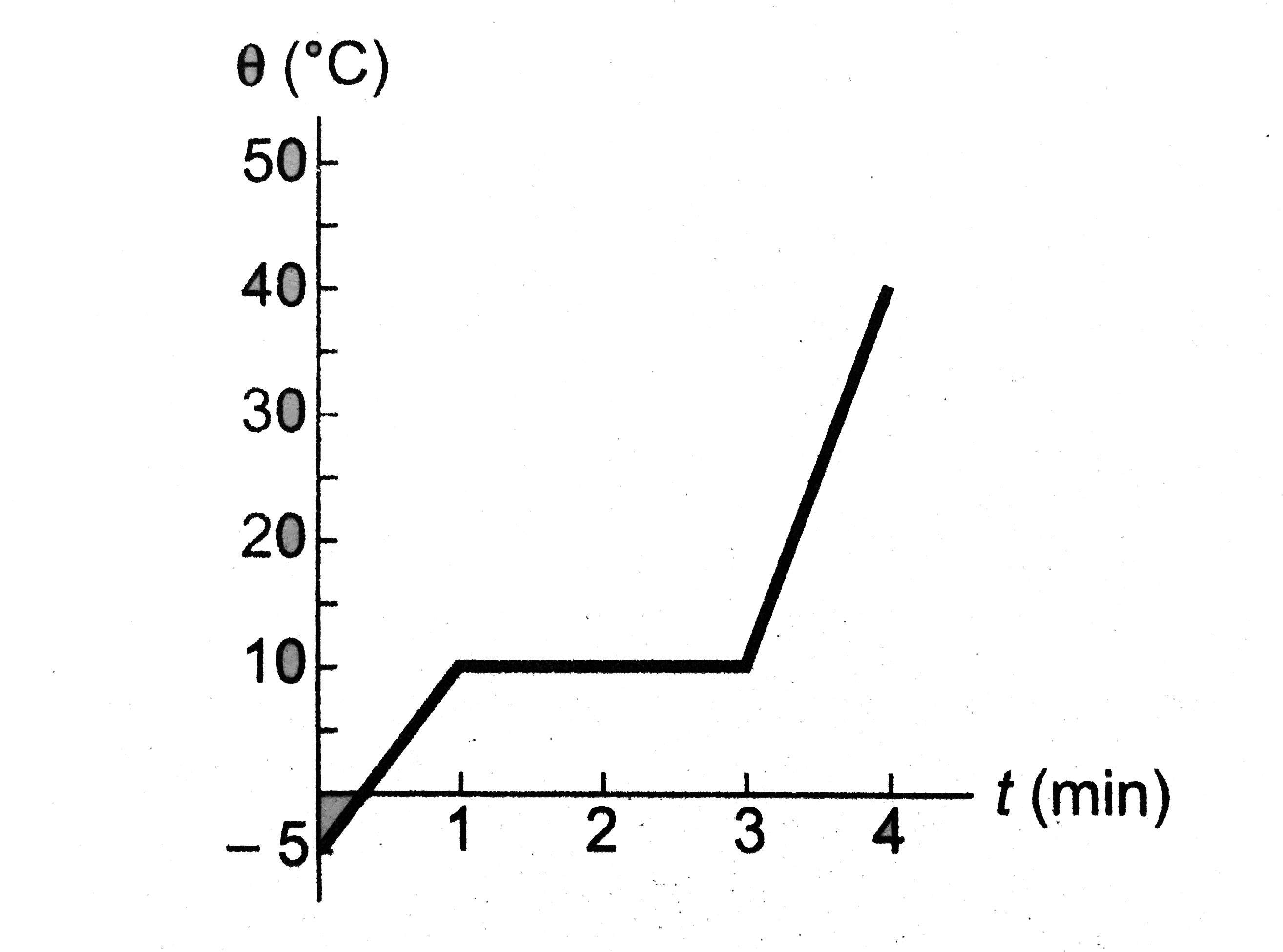Consider a compound slab consisting of two different material having equal thickness and thermal conductivities K and 2K respectively. The equivalent thermal conductivity of the slab is
2/3K
√2K
3K
(4/3)K
The correct Answer is:D
Keq=2K1K2K1+K2=2(K)(2K)K+2K=43K
Topper's Solved these Questions
- CALORIMETRY AND HEAT TRANSFERBook:DC PANDEYChapter:CALORIMETRY AND HEAT TRANSFERExercise:Check points 16.4
Explore 25 Videos
- CALORIMETRY AND HEAT TRANSFERBook:DC PANDEYChapter:CALORIMETRY AND HEAT TRANSFERExercise:Taking it together
Explore 47 Videos
- CALORIMETRY AND HEAT TRANSFERBook:DC PANDEYChapter:CALORIMETRY AND HEAT TRANSFERExercise:Check point 16.2
Explore 10 Videos
- CALORIMETRY & HEAT TRANSFERBook:DC PANDEYChapter:CALORIMETRY & HEAT TRANSFERExercise:Level 2 Subjective
Explore 14 Videos
- CENTRE OF MASSBook:DC PANDEYChapter:CENTRE OF MASSExercise:Medical entrances gallery
Explore 27 Videos
Similar Questions
In a room containing air, heat can go from one place to another
View SolutionThe temperature of a body in increased from 27∘C to 127∘C. By what factor would the radiation emitted by it increase?
View SolutionA substance of mass M kg requires a power input of P wants to remain in the molten state at its melting point. When the power source is turned off, the sample completely solidifies in time t seconds. The latent heat of fusion of the substance is …….
View SolutionAs a physicist, you put heat into a 500 g solid sample at the rate of 10.0kJ/min, while recording its temperature as a function of time. You plot your data and obtain the graph shown in figure.
 .
.
(a) What is the latent heat of fusion for this solid?
(b) What is the specific heat of solid state of the material?
View SolutionA rod of weight w is supported by two parallel knife edges A and B and is in equilibrium in a horizontal position. The knives are at a distance d from each other. The centre of mass of the rod is at distance x from A. The normal reaction on A is.. And on B is......
View SolutionConsider a compound slab consisting of two different material having equal thickness and thermal conductivities K and 2K respectively. The equivalent thermal conductivity of the slab is
View SolutionA slab consists of two layers of different materials of the same thickness and having thermal conductivities K_(1) and K_(2) . The equivalent thermal conductivity of the slab is
View SolutionA slab consists of two parallel layers of two different materials of same thickness having thermal conductivities K_(1) and K_(2) . The equivalent conductivity of the combination is
View SolutionA slab consists of two parallel layers of two different materials of same thickness having thermal conductivities K1 and K2. The equivalent conductivity of the combination is
View SolutionA slab consists of two parallel layers of two different materials of same thickness having thermal conductivities K_(1) and K_(2) , the equivalent conductivity of the combination is :
View SolutionConsider a compounds slab consisting of two different materials having equal thicknesses and thermal conductivities K and 2K respectively. The equivalent thermal conductivity of the slab is :
View SolutionConsider a compound slab consisting of two different materials having equal thickness and thermal conductivities K and 2 K respectively. The equivalent thermal conductivity of the slab is
View SolutionA slab consists of two parallel layers of two different materials of same thickness having thermal conductivities k_(1) & k_(2) . The equivalent conductivity of the combination is :
View SolutionCombined rods made by adding two rods of different thickness but different materials whose thermal conductivities are K and 2K respectively, it will have the same thermal conductivity.
View SolutionConsider a compound slab consisting of two different materials having equal thicknesses and thermal conductivities K and 2K respectively. The equivalent thermal conductivity of the slab is . . . . . .. .
View SolutionA compound slab is made up two slabs. If thermal conductivity of their material are k1 and k2 respectively of their cross-sectional areas are the same, the equivalent thermal conductivity of the slab is . . . . . (consider series connection)
View Solution
